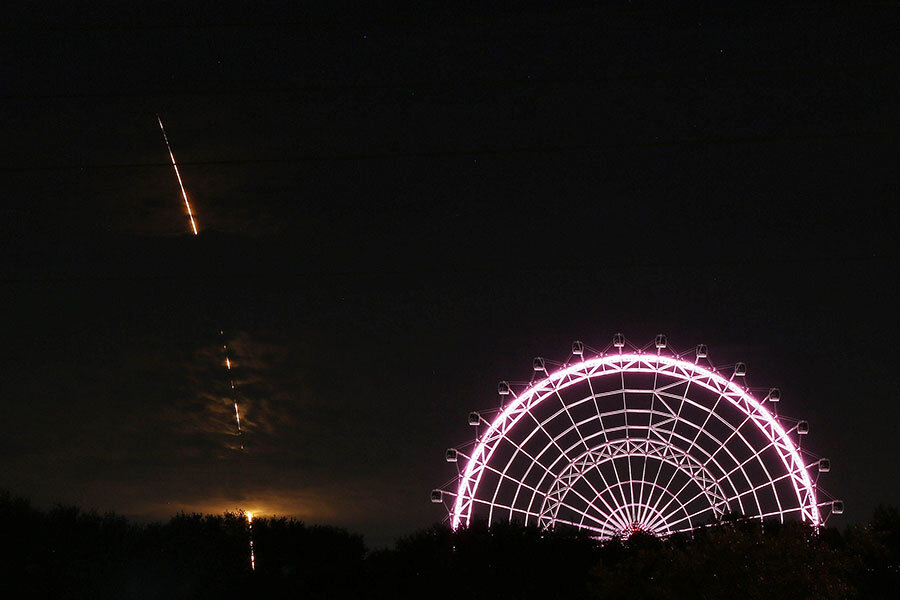SpaceX rocket sends cargo to space station, sticks another landing
Loading...
It was just past midnight Monday when an unmanned SpaceX Falcon 9 rocket tore across the night sky above the Atlantic before it landed vertically on the ground in Cape Canaveral, Fla. In those eight minutes, it was able to hurl nearly 5,000 pounds of cargo at the International Space Station (ISS), including a DNA sequencer and a docking adapter for commercial spacecraft.
With the Biomolecule Sequencer, NASA Astronaut Kate Rubins will attempt to sequence DNA for the first time in space. With the docking adapter, SpaceX and Boeing hope to soon fly Americans in crew capsules to the space station 250 miles above Earth.
The delivery of these two pieces of cargo represent NASA teaming up with private companies to innovate in space, even as it retired its own fleet of space shuttles five years ago, meaning it now has to pay Russia $82 million for each astronaut it ferries to and from the space station.
“With equipment to enable novel experiments never attempted before in space, and an international docking adapter vital to the future of US commercial crew spacecraft, we’re thrilled this Dragon has successfully taken flight,” said Kirk Shireman, NASA’s ISS program manager, in a statement Monday. “Each commercial resupply flight to the space station is a significant event. Everything, from the science to the spare hardware and crew supplies, is vital for sustaining our mission.”
The unmanned Falcon 9 lifted off from Cape Canaveral at 12:45 a.m. Monday, the company’s ninth resupply mission to the ISS. The reusable rocket landed vertically just a few miles from the launch site, the fifth such vertical landing for SpaceX, which is owned and operated by Elon Musk. It was also SpaceX’s second such booster to land vertically on land.
Perched atop the rocket was the Dragon capsule, which is expected to arrive at the ISS on Wednesday.
Also aboard the capsule is the Biomolecule Sequencer. The equipment will test whether an astronaut can sequence DNA in microgravity to identify microbes, monitor crew health, and possibly detect DNA-based life off the Earth, according to NASA. Currently, samples collected in space must be returned to Earth and tested there. Ms. Rubins, a cancer biologist turned astronaut, will attempt to sequence the first DNA in space.
Also aboard the Dragon is the docking adapter, the second one SpaceX has attempted to deliver to the ISS. The first went up in flames over the Atlantic in a failed launch last year.
Mr. Shireman told the Associated Press he expected to be "sweating bullets without a doubt" at liftoff, as always. He said all the cargo is precious, but really wants this docking port "up there safe and sound."
The new docking adapter will allow Americans to land at the ISS in crew capsules. SpaceX expects to send its first manned missions to the ISS next year in Dragon cargo ships that will be adapted for human spaceflight. Boeing, which makes the docking adapters, is working on its own crew capsule it has dubbed the Starliner.
Meanwhile, SpaceX hopes to reuse the Falcon 9 and other rockets to shave launch costs. Boosters are normally ditched at sea. The company hopes to launch its first recovered rocket this fall.
This report contains material from the Associated Press and Reuters.





